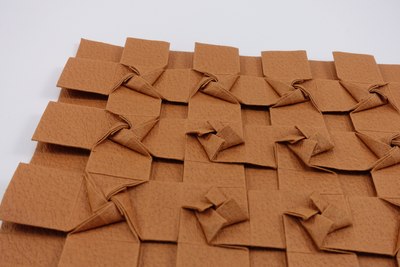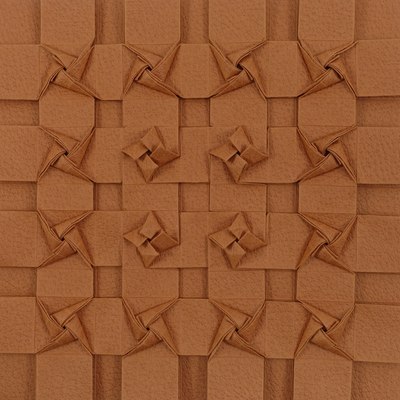Biogami Paper Review


I used Braided Pinwheel Tessellation to test Biogami paper which I got interested in after seeing Nicolas Terry’s penguin folded from it. This is a thick paper which makes it an interesting option for models like this one, where the molecule does not need very precise folding but benefits from getting some extra volume from its many layers. There is a noticeable difference in bending resistance along and perpendicular to machine direction (paper grain). Perpendicular to the grain, resistance was so large that I think folding a grid with units much smaller than 1 cm would be very hard.
Biogami looks like leather, especially in the buff color I used for this model. The surface is embossed, and the two sides look and feel different since the bumps which protrude on one side are concave of the other. Precreasing went generally well, though I did notice some swaying of grid lines to the side when folding perpendicular to the grain. Due to the thickness, it’s hard to precrease lines which end at a point without creating some wrinkles in the paper near the crease’s end, though the texture makes those wrinkles less visible. Certainly, I would not recommend precreasing this paper without a bone folder.
The paper not only looks but also feels somewhat leathery/plasticky, and it is not very crisp. It’s just good enough for precreasing, and just rigid enough for collapsing, but a more complex collapse would probably cause it trouble. Memory (holding a folded crease in place) is average. What I really liked about this paper’s folding properties was the final shaping: Biogami is thick, fleshy, and gives the model a lot of volume.
In summary, this is not a typical tessellation paper, but it worked really well for this particular model. While the strictly geometric folding: precreasing and initial collapse, went just OK, final shaping was the real highlight. From these properties, I suppose this paper would work really well with models which need lots of volume, perhaps 3D folds and animals with organic, rounded shaping.
Comments